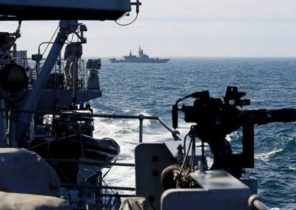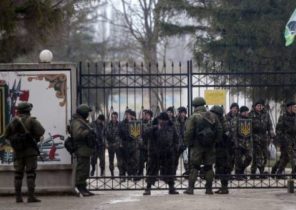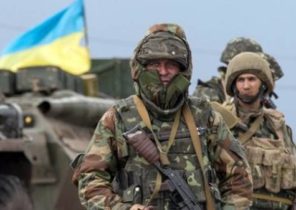
Robert (Bob) Wark (Robert Work) — interesting personality. Today he is one of the key Pentagon strategists of warfare in the future. Bob Wark served in the marine Corps of the United States for 27 years, commanded an artillery battalion and rose to the rank of Colonel. In 2001 she resigned and began to occupy various positions in military organizations. From may 2009 to March 2013 — Deputy Minister of the naval forces of the United States. In may 2014 Wark took the post of Deputy Secretary of defense under President Obama. After the inauguration of the new President of Donald trump, despite the change of leadership of the Pentagon, Wark was left in its place. In March, trump said that he has a new candidate for the position of Deputy Minister of defense, but it’s been two months, and Wark all as it takes office.
Why Bob Wark is so important for the Pentagon? Formally, Wark, at the request of the head of the armed forces of the USA General James Mattis (James Mattis) have to finish all the questions related to the development of a new military budget of the country. Informal, Wark is a passionate ideologue of the new approaches to combat operations of the future.
His strong point is the introduction of artificial intelligence and robotic systems in the armed forces, the development of a strategy for war in space and conducting combined combat (as we call Multi-Domain Battle — the simultaneous conduct of combat operations in various areas: on land, sea, air, space, cyberspace and the electromagnetic spectrum) in terms of “limitations of access” (A2/AD Anti-Access, Area Denial). Actually the development of large-scale strategy of the “Third opposition” (Third Offset Strategy), designed to provide military-technological advantage of the United States to Russia and China, is also the brainchild Wark.
In 2014, Bob Wark has published a co-authored monograph “20YY: preparing for war in the age of robots”, which became a Handbook for analysts of wars of the future.
But in addition to loud and always attracting the attention of press, public speeches, books, articles and interviews activity Wark brings real results.
In April, the largest database of marine Corps U.S. West coast camp Pendleton were the first in the history of the doctrine S2ME2 ANTX (Ship To Shore Maneuver Exploration and Experimentation of Advanced Naval Technology Exercise), which was tested about 50 new military technologies. Including unmanned ground robotic platform, leading fire on the enemy, automatically delivering ammunition and are responsible for the material support landing Marines.
Wark does a lot for the work experimental center of the combined space operations (JICSpOC), which aims to coordinate the work of communications and US military satellites in case of war on land and in space with a technologically advanced adversary.
April 26 Bob Wark established a special unit to conduct “algorithmic hostilities” (Maven Project), which should take over and accelerate the introduction of artificial intelligence and machine learning in the armed forces.
Already the first of may the division was to report on the plans, and every three months in practice to implement those or other technologies. After the introduction of artificial intelligence in one area the team starts work in another. According to Wark, it is time to move away from ad hoc attempts of introduction of new information technologies and to transform it into a continuous process in all the armed forces.
For the slow bureaucracy of the Pentagon 90 days is a fantastic pace.
Wark in a hurry. According to him, in the same deal, likely enemies — Russia and China, the Union and Israel, whose actions and application of artificial intelligence for military purposes can lead to destabilization of the entire Middle East region. In the world today, according to the American online publication Defense One, there are 284 military system, which to some extent already include artificial intelligence. And there is no guarantee that the U.S. in that new race will be the winner.
Deputy Minister of defense said the following: “Although we have taken preliminary steps to explore the potential of artificial intelligence, big data and deep learning, I remain convinced that we need to do much more and move much faster.”
The first task of a new division of the Pentagon (Maven Project) is the use of artificial intelligence to analyze data and videos received in Syria and Iraq. Today, up to 95% of all data that enters the analytical military centers of the U.S. c drones coming from these two countries. The people in the truest sense of the word can not cope with the processing and analysis of such vast amounts of information. Up to 80% of their working time is just the frame.
Artificial intelligence in theory should help them to identify objects, to detect abnormal sequences of actions on the ground, etc. Artificial intelligence will identify targets for destruction, but will do it to people, though, and today being performed to develop systems which would be autonomously determined enemy, referring to the “library” purposes.
The priority of military and development of the systems “man-machine”.
This spring there were two interesting conference on application of artificial intelligence in future military operations. One of them was dedicated to the acceleration of processes of symbiosis of man and machine, the military strategy of the “Third opposition”, and the second Research laboratory of the U.S. army presented a study which shows that trained neural network to load data about the activity of the human brain, when he defines the goal and decides to bring a gun on her.
Artificial intelligence is not yet able to make such decisions in a rapidly changing world of the fighting, although work on the Autonomous behavior of unmanned vehicles on the roads is impressive. But in a chaotic military situation the cost of failure even more than on the road. Ideally, a new approach and study of brain signals best soldiers to do their job in critical situations, will in the end constantly the learner an artificial intelligence then yourself, and in real-time to identify targets without human intervention.
Bob Wark speaks often of the need to pay attention to new technologies based on artificial intelligence: “the U.S. military is familiar with Autonomous systems of warfare, which it has used in the last decade in Iraq, Afghanistan and other countries. But such weapons as a controlled air and ground vehicles with remote control, will soon be replaced by a predominantly unmanned and Autonomous systems in all physical areas (air, sea, under water, on land and in space) and in most military operations. Still need some time to a new way of waging war has become more apparent, in which unmanned and Autonomous systems will occupy a Central place in the conduct of battle”.







